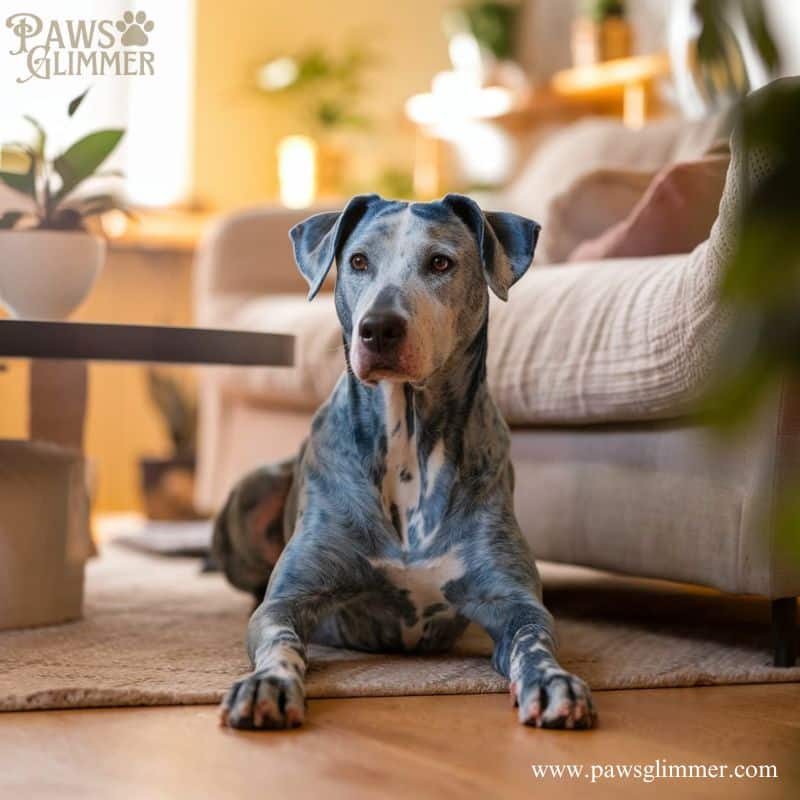The Australian Cattle Dog, affectionately known as the blue heeler, is a breed that captures hearts with its intelligence, loyalty, and boundless energy. But for those considering bringing one of these remarkable cattle herders into their lives, a crucial question often arises: How long can a Blue Heeler dog live?
This comprehensive guide delves deep into the factors that influence the lifespan of these beloved aussie blue companions, offering insights and practical advice to help your furry friend live a long, healthy, and fulfilling life.
The Australian Cattle Dog’s Legacy: From Down Under to Global Fame
The story of the blue dog begins in the vast expanses of the Australian outback. Bred to withstand harsh conditions and tirelessly herd cattle across immense distances, the Blue Heeler’s australian origin is a testament to its resilience and adaptability.
A Brief History of the Heeler Breed
- 1800s: Development begins in New South Wales, Australia
- Key ancestors: Dingoes, Collies, and Dalmatians
- 1980: American Kennel Club recognition
The Blue Heeler’s antipodean canines heritage has gifted the breed with remarkable stamina, intelligence, and a robust constitution – all factors that contribute to their potential for longevity.
Lifespan Expectations: By the Numbers
When it comes to the life expectancy elements of Blue Heelers, the numbers paint an encouraging picture:

| Aspect | Details |
|---|---|
| Average Lifespan | 12-16 years |
| Healthy Weight Range | 35-50 pounds |
| Prime Adult Years | 2-8 years old |
It’s worth noting that these figures represent averages. Many Blue Heelers have been known to surpass these expectations, with some exceptional cases living well into their late teens or even early twenties.
“The key to a long life for any dog is a combination of good genes, excellent care, and a bit of luck,” – Dr. Sarah Thompson, Veterinary Gerontologist
Genetic Jackpot: The Blueprint for a Long Life
The heeler breed‘s genetic makeup plays a crucial role in their longevity potential. While they benefit from a generally robust genetic profile, they’re not without their breed-specific ailments.
Learn More About My Dog’s Tummy Gurgles and Won’t Eat
Health Advantages of Blue Heelers
- Natural athleticism
- Strong immune systems
- Generally good joint health (with proper care)
Potential Inherited Health Concerns
- Progressive retinal atrophy: A group of genetic eye diseases that can lead to vision loss
- Hip dysplasia: A skeletal problem affecting the hip joint
- Deafness: More common in predominantly white Blue Heelers
Understanding these genetic problems allows owners to take preventative measures and seek early treatment when necessary.
The Owner’s Playbook: Your Role in Extending Their Years

As a Blue Heeler owner, you play a pivotal role in influencing your dog’s longevity factors. Let’s explore the key areas where your care can make a significant difference.
Exercise: Balancing Work and Play
Blue Heelers are built for action. Their need for regular exercise cannot be overstated. A well-exercised Blue Heeler is a happy, healthy Blue Heeler.
Daily Movement Goals:
- 1-2 hours of vigorous physical activity
- Mix of running, fetching, and agility exercises
- Swimming (excellent low-impact option)
Case Study: Max the Marathon Heeler
Max, a 7-year-old Blue Heeler from Colorado, regularly joins his owner on 10-mile trail runs. His vet attributes his excellent health and vitality to this consistent active lifestyle.
Mental Stimulation: Keeping That Herding Brain Sharp

Blue heelers are working dogs at heart. Mental engagement is crucial for their overall well-being and can contribute significantly to their longevity.
Brain Games for Blue Heelers:
- Hide-and-seek with toys or treats
- Puzzle feeders
- Obedience training sessions
- Herding balls
Socialization: Building a Well-Rounded Canine Citizen
Proper socialization helps prevent stress and anxiety, which can negatively impact a dog’s health over time. Expose your Blue Heeler to various people, animals, and environments from a young age.
Other Resources You May Like Why Is My Cat Nose White?
Home Sweet Home: Creating the Ideal Blue Heeler Environment
The environment you provide for your cattle herder can significantly influence their lifespan. Whether you’re in an urban apartment or a sprawling rural property, adapting your space to meet your Blue Heeler’s needs is crucial.
Urban vs. Rural Living: Adapting to Your Blue Heeler’s Needs
Urban Blue Heeler Tips:
- Frequent visits to dog parks
- Long walks exploring the city
- Balcony or rooftop play areas
Rural Blue Heeler Benefits:
- Large spaces for running
- Opportunities for natural herding behaviors
- Fewer leash restrictions
Weather Considerations: From Outback Heat to City Winters
Blue Heelers are adaptable, but extreme weather requires extra care:
- Hot Weather: Provide shade, fresh water, and avoid exercising during peak heat
- Cold Weather: Consider a dog coat for short-haired Heelers and protect paw pads from ice and salt
Health Watch: Staying One Step Ahead
Proactive health management is key to extending your Blue Heeler’s lifespan. Regular vet check-ups can catch potential issues early, significantly improving outcomes.
Common Age-Related Issues in Blue Heelers
- Arthritis: Joint supplements and low-impact exercise can help
- Dental problems: Regular teeth cleaning prevents systemic health issues
- Cancer: Early detection is crucial; know your dog’s normal lumps and bumps
Preventative Care: Your Vet’s Game Plan
Work with your vet to create a tailored preventative care plan:
- Annual or bi-annual check-ups
- Core vaccinations
- Regular parasite prevention
- Dental cleanings
Alternative Therapies: Exploring Holistic Options

Many Blue Heeler owners report success with complementary therapies:
- Acupuncture for pain management
- Massage for muscle health
- Hydrotherapy for joint issues
Always consult with your vet before starting any alternative treatments.
The Blue Heeler Diet: Fuel for Longevity
A balanced diet is fundamental to your Blue Heeler’s health and longevity. Their high energy levels and muscular build require careful nutritional management throughout their life stages.
Puppy Power: Nutrition for a Strong Start
Blue Heeler puppies need a protein-rich diet to support their rapid growth and development:
- 22-24% protein content
- 8-10% fat content
- Calcium and phosphorus for bone development
Adult Appetites: Balancing Energy and Weight Management
Adult Blue Heelers benefit from a diet that supports their active lifestyle:
- 18-22% protein content
- 5-8% fat content
- Glucosamine and chondroitin for joint health
Senior Dining: Adapting the Menu as They Age
As your Blue Heeler enters their golden years, their dietary requirements may change:

- Slightly reduced calorie intake
- Increased fiber for digestive health
- Omega-3 fatty acids for cognitive function
“A tailored feeding plan that evolves with your Blue Heeler’s life stages is one of the most impactful ways to support their longevity.” – Dr. Emily Chen, Canine Nutritionist
Grooming for Greatness: More Than Just Good Looks
While Blue Heelers are relatively low-maintenance in the grooming department, regular care contributes to their overall health and comfort.
Coat Care: Minimizing Shedding, Maximizing Health
- Brush 1-2 times weekly to remove loose fur and distribute natural oils
- Bathe only when necessary to preserve protective oils
- Check for skin issues during grooming sessions
Don’t Miss Out on These Insights
Dental Hygiene: The Often Overlooked Health Booster
Poor dental health can lead to systemic issues that impact longevity. Prioritize your Blue Heeler’s dental care:
- Brush teeth 2-3 times weekly
- Provide dental chews or toys
- Schedule professional cleanings as recommended by your vet
Training for Life: Shaping Body and Mind
Proper training is not just about good behavior; it’s a crucial component of your Blue Heeler’s mental and physical health.
Puppy Foundations: Setting the Stage for a Long, Happy Life
Start early with these key training areas:
- Basic obedience
- Leash manners
- Socialization with people and animals
- Crate training for safety and comfort
Lifelong Learning: Keeping Your Blue Heeler Engaged at Any Age
Blue Heelers thrive on mental challenges throughout their lives:
- Advanced obedience training
- Agility courses
- Scent work
- Herding trials (even for city dogs!)
The Golden Years: Embracing Your Blue Heeler’s Senior Status
As your Blue Heeler ages, adapting their care routine can significantly impact their quality of life and potentially extend their years with you.
Adapting Activities for Aging Bodies
- Lower impact exercises like swimming
- Shorter, more frequent walks
- Puzzle toys for mental stimulation
Quality of Life Considerations: Tough Conversations
It’s important to regularly assess your aging Blue Heeler’s quality of life:
- Mobility
- Pain levels
- Enjoyment of daily activities
- Cognitive function
Open communication with your vet can help you make informed decisions about your senior Blue Heeler’s care.
Blue Heeler Longevity in Perspective
When compared to other breeds, Blue Heelers often stand out for their potential longevity.
Here’s the table with the breed and average lifespan:
| Breed | Average Lifespan |
|---|---|
| Blue Heeler | 12-16 years |
| Labrador Retriever | 10-12 years |
| German Shepherd | 9-13 years |
| Chihuahua | 12-20 years |
While genetics play a role, the care you provide can make a significant difference in where your Blue Heeler falls within (or even beyond) this range.
Looking to the Future: Advancements in Canine Health and Longevity
The field of canine health is constantly evolving, with new research offering hope for even longer, healthier lives for our furry companions.
Emerging Research in Dog Aging
- Genetic testing for predisposition to certain diseases
- Stem cell therapies for joint issues
- Personalized nutrition based on genetic profiles
Potential Breakthroughs on the Horizon
- Cancer vaccines
- Gene therapy for inherited conditions
- Advanced early detection methods for age-related diseases
As we look to the future, the prospects for extending the already impressive lifespan of Blue Heelers are exciting. However, the foundation of a long, healthy life for these remarkable farm dogs remains rooted in the basics: love, care, proper nutrition, and an active lifestyle tailored to their unique needs.
By understanding and addressing the specific requirements of the Blue Heeler breed, from their high exercise needs to their potential health concerns, owners can play a pivotal role in ensuring their beloved companions enjoy not just a long life, but a high-quality one filled with joy, activity, and the deep bond that makes the Blue Heeler such a cherished member of the family.

Raymond Dandan is a seasoned pet blogger with a passion for feline care and behavior. With years of experience and a deep love for cats, Raymond brings expert insights and practical tips to “PawsGlimmer.” His engaging writing and thorough research help cat owners provide the best for their furry friends, making him a trusted voice in the pet community.







